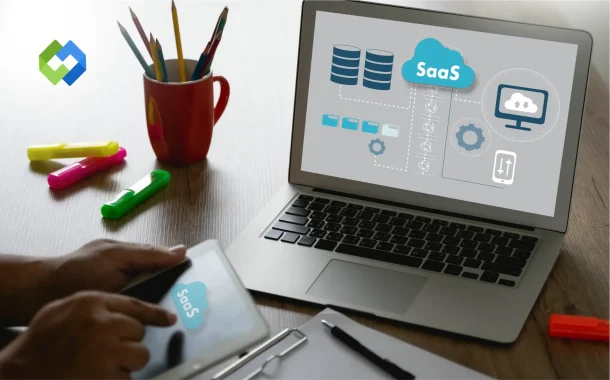The internet isn’t a nice-to-have for SaaS; it’s the pipe. And if the pipe is full of sludge, your billion-dollar baby can’t get out the door.
Table of Contents
Table of Contents
The Core Problem: Sluggishness and Slowdown
When a user sits there staring at a spinning wheel, they aren’t thinking about your server architecture. They’re thinking, “This app is slow, and I’m switching vendors.”
We have two fundamental choke points, and they’re both unforgiving:
A. Latency (The Annoying Wait)
What it is: The time it takes for data to ping-pong between the user’s device and your server.
The Issue: An unreliable connection means high latency. You click a button, and nothing happens. It’s a lag. It’s unresponsive.
The Result: In the tech world, we call that a terrible user experience. In the real world, we call that wasted money and lost productivity.
B. Throughput (The Traffic Jam)
What it is: The volume of data successfully transferred per second.
The Issue: Your application may be a data hog (a video editor, a massive CRM dashboard). If the connection’s throughput is low because the internet is shaky, you hit a data traffic jam.
The Result: Uploads fail. Downloads time out. Transactions stall. This isn’t a feature; it’s a bug in your delivery model.
If your software feels like it’s running on a dial-up modem, you have failed the most basic test of the cloud era. Period.
The Unforgivable Sin: Availability and Stability
SaaS providers love to boast about their “four nines” of uptime (99.99% availability). That’s great for your infrastructure, but frankly, I don’t care.
When a user in a less-than-perfect coverage area gets disconnected in the middle of closing a deal or running payroll, the SaaS company doesn’t get a pass. The customer experiences it as an application failure, full stop.
The Disconnection Tax: What Instability Costs You
| Impact Category | Effect of Unreliable Connection | The Business Consequence |
| Data Integrity | Random drops in connection. | Users lose unsaved work and have to start over. |
| Customer Service | Frequent interruptions and failures. | Huge spike in support tickets and increased operational costs. |
| User Perception | The app is constantly kicking people off. | Massive drop in trust and damaged brand reputation. |
| Retention | Chronic frustration with the platform. | The most reliable pathway to customer churn (attrition). |
The Blame Game: Why Everyone Points Fingers
Look, when things go sideways, nobody wants to take the hit. The customer blames the software, and the SaaS vendor points to the Wi-Fi icon. It’s a vicious cycle of denial, and it costs everyone money.
The Vendor’s Failure to Adapt
Let’s be clear: while you can’t control your customer’s third-world coffee shop connection, you can control how your app handles the inevitable hiccups. If your entire architecture depends on a pristine, zero-latency fiber line, or assumes the user is on a perfectly-installed cat6 plenum cable from a vendor like Monk Cables, you’ve built a fantasy, not a resilient enterprise product. That’s bad engineering. Smart companies anticipate degradation. They use edge computing and Content Delivery Networks (CDNs) to put resources closer to the user. If your data center is sitting in Virginia and your customer is in Singapore, and you haven’t invested in a global CDN, you’re not a cutting-edge cloud company. You’re just cheap. Your failure to spend the money on basic network resilience is why your user is getting dropped during a crucial video call. Own it.
The Customer’s Delusion of Reliability
On the flip side, customers need a reality check. You’re paying for a premium cloud service, but you’re trying to run a resource-intensive analytics report on a tethered 4G hotspot in a basement. That’s a user error, but it’s one that the SaaS company has to account for. When connectivity drops below a functional threshold, your application needs to provide a clear, actionable error message—not just a blank screen or a cryptic “Error 404.”
The software should alert the user: “Network integrity too poor for this operation. Please move to a stable connection.” Hiding the problem doesn’t make it go away; it just makes the customer hate your brand more.
The Hidden Costs: Security and Scalability Traps
The instability of the internet connection doesn’t just make your application slow; it creates genuine operational threats that smart companies can’t ignore.
The Security Vulnerability
Shaky connections are a security nightmare. When data transfer is interrupted repeatedly, it can create vulnerabilities. Are you using robust, multi-layered encryption to handle intermittent transfers? Are your re-authentication protocols smart enough to re-verify the user immediately without being so cumbersome that they quit the app?
Many security measures, like multi-factor authentication (MFA) and token refreshing, rely on fast, consistent network calls. A poor connection can delay or fail these calls, forcing the system to either dangerously relax its security posture or lock the user out entirely. That’s a lose-lose proposition driven by network fragility.
The Scalability Nightmare
And let’s talk about scalability. You think your app scales horizontally because you can spin up a dozen new virtual machines? Think again. If your users’ erratic connections are forcing your system to constantly handle re-attempts, rollbacks, and failed data synchronization requests, you’re wasting massive amounts of server resources.
Bad client-side internet pushes complexity and cost back onto the server. You’re not scaling efficiently; you’re just paying your cloud provider more money to manage your users’ poor Wi-Fi. It’s financial suicide masked as growth.
The Bottom Line: No Wires, No Wealth
The romance of the cloud is over. We’re in the messy middle where we have to deliver consistent, stable services across all kinds of chaotic networks.
If your SaaS solution is hemorrhaging users, slow performance due to poor connectivity is a far more likely culprit than your competitor having a slightly better pricing tier. Performance is the product. If you ignore the fickle reality of the internet connection, you are willfully ignoring the thing that will ultimately determine your fate.
The Final Reckoning: Engineering for the Awful
If you are a SaaS CEO or CTO, your priority must shift from “How fast can we push this feature?” to “How resilient is our application when the network inevitably fails?” This means engineering for the worst-case scenario. It means investing in offline sync capabilities for mobile apps. It means prioritizing efficient data compression and sending smaller, bite-sized data packets that are less likely to be corrupted by connection drops. It means building smart, client-side caching so users can keep working even if the server is unreachable for a few seconds.
The best SaaS companies don’t just survive bad internet; they manage to make the bad internet feel tolerable. Your engineering team needs to stop building for the ideal scenario presented on a glossy whiteboard and start building for the real world—where people use your software on trains, in crowded convention centers, and tethered to their phones.














